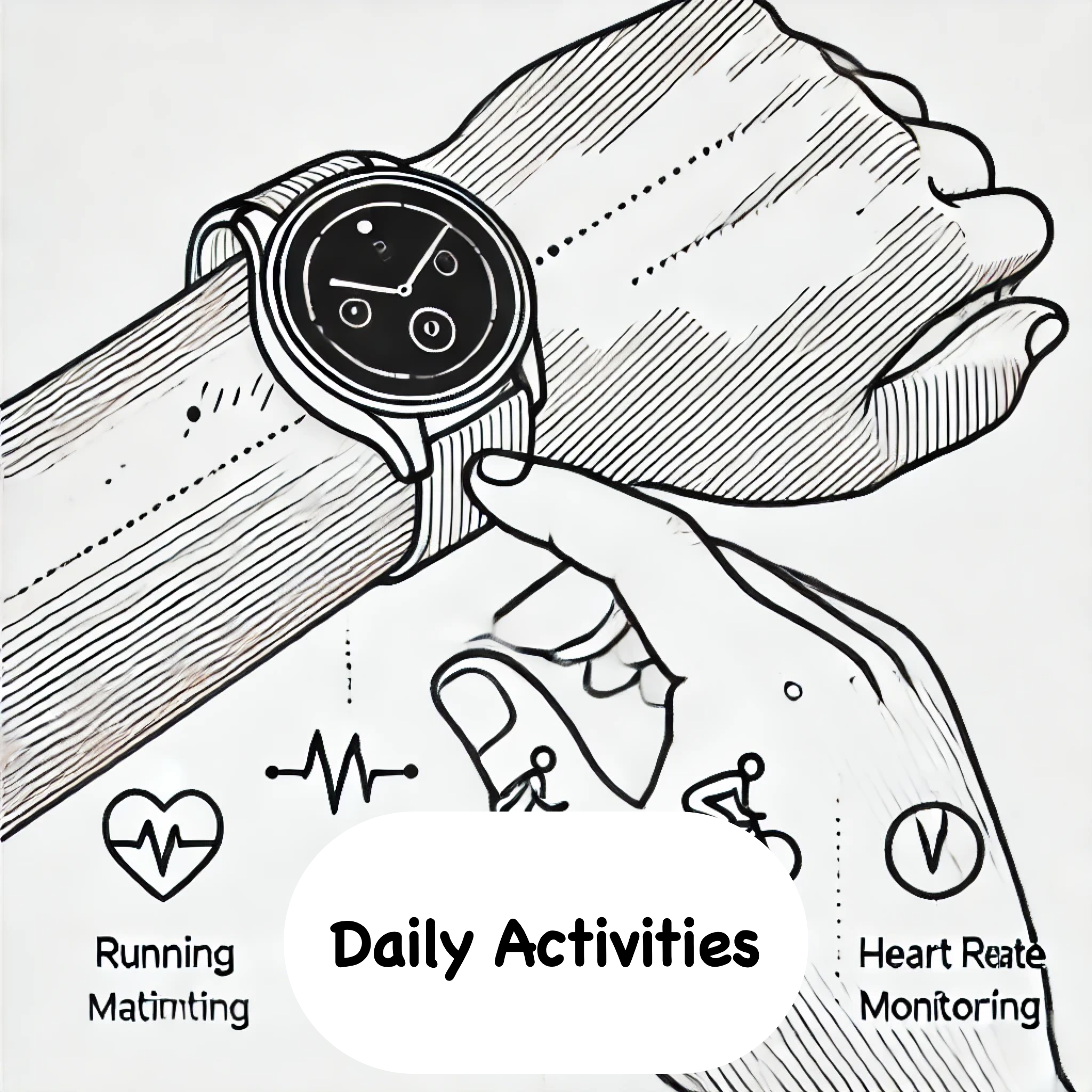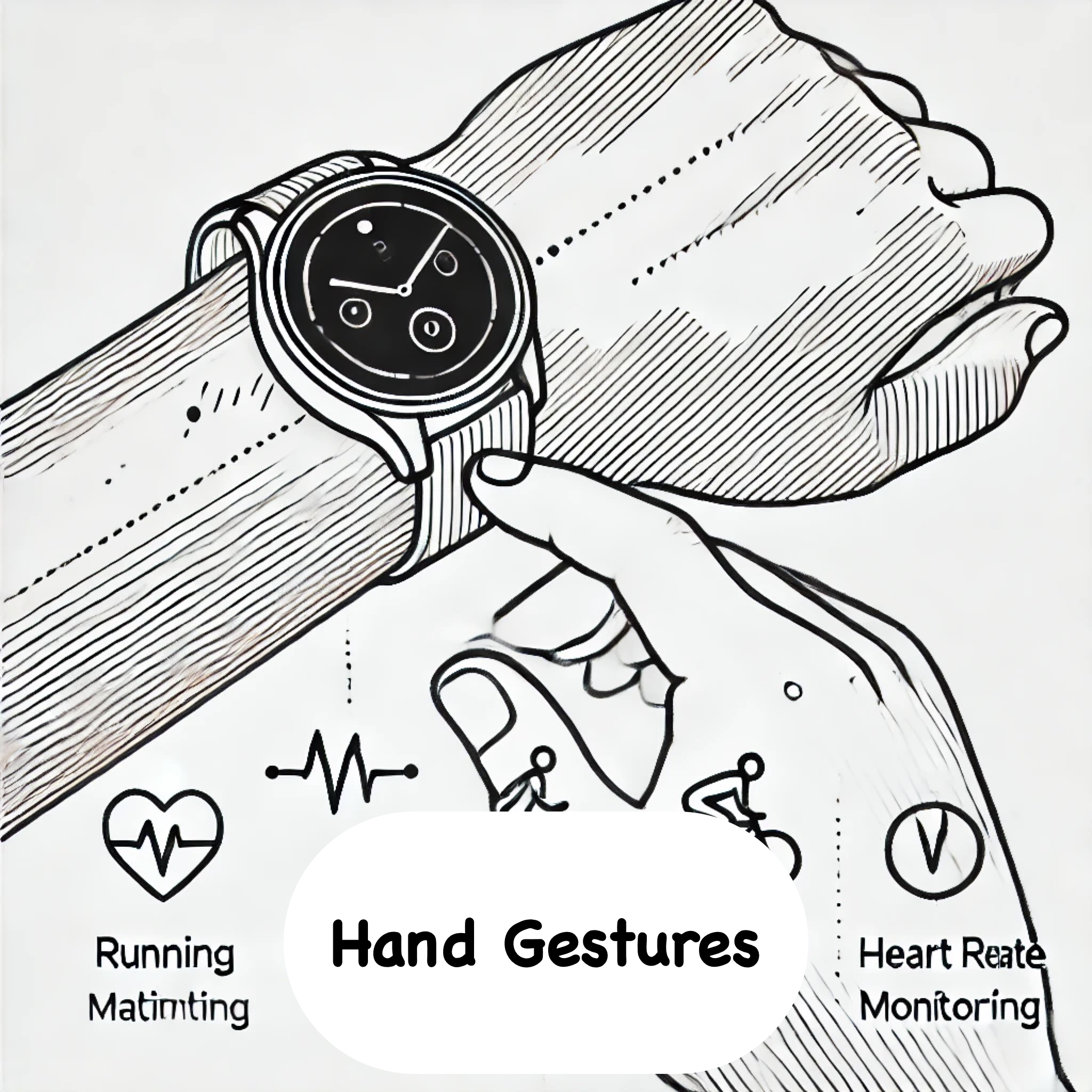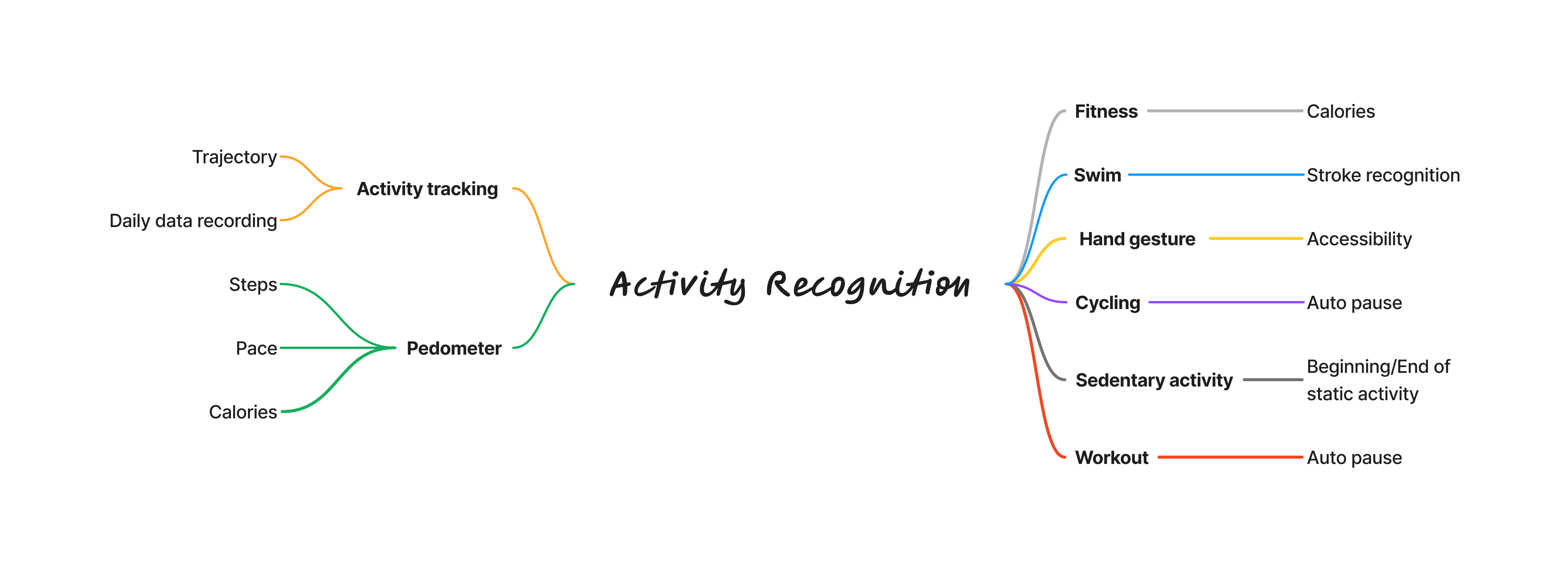Works
Activity Recognition
machine learning

Target Activities
Walking
Running
Riding
Workout
Unknown (FalseNegative)

Target Activities
Freestyle (Front Crawl)
Breaststroke
Backstroke
Butterfly Stroke
Unknown (FalseNegative)

Target Activities
Finger Rubbing
Hand Clench
Unknown (FalseNegative)
Challenges
Activities are highly diverse, ranging from simple tasks
like walking or sitting to complex actions like exercising
or household chores. This diversity is amplified by
differences among people, including variations in age,
fitness levels, physical abilities, and lifestyle.
Additionally, sensor noise, differences in user behavior,
and environmental factors can reduce accuracy, requiring
robust models and large datasets for effective
recognition.
In the product commercialization phase,
the software must undergo comprehensive evaluation,
including assessments of power consumption, ROM, and RAM
usage. These metrics must be kept to a minimum to maximize
client base.
| Daily Activity | Swimming Strokes | Hand Gestures | |
|---|---|---|---|
| Signal behaivor | Highly diverse | Significant | Subtle |
| Noise effect | Medium | Low | High |
| Example of unknown | Household chores, personal cleanliness, driving, ... | Walking, free floating, ... | Typing on keyboard, cycling, ... |
| Some attributions in diversity |
Strength: heavy v.s. light weight |
continuity: consistent v.s. chaotic posture: standard v.s. deviate |
Strength: heavy v.s. light Speed: rapid v.s. slow |
Approaches
effective signal analysis
Signal analysis can help manage the diversity of daily activities by extracting key features from sensor data that are less sensitive to individual differences. By focusing on patterns like frequency, amplitude, and acceleration, signal analysis can highlight the underlying characteristics of activities, making it easier for machine learning models to distinguish between them. Techniques such as filtering, transformation, and feature extraction can reduce noise and normalize data across users, enabling models to handle variations in movement styles, intensity, and sensor placement more effectively.
data manipulation
Improving the database can boost machine learning results by cleaning and organizing the data. Techniques like data augmentation increase diversity, while normalization removes biases. Clear labeling and filtering out noise help models focus on important features. Balancing the data also ensures the model doesn't favor common activities, leading to better performance across different tasks.
ensemble learning
A cascade model in machine learning is a technique where multiple models are used in sequence, with each model focusing on different parts of the problem. The first model handles easy tasks, and more complex tasks are passed to the next models. This approach improves efficiency by allowing simpler models to handle most cases, while more advanced models handle the tougher ones, leading to better overall performance.
Monte Carlo methods
This technique helps estimate probabilities, optimize decisions, and reduce uncertainty in complex problems. The model learns from past experience to estimate the likelihood of future events, drawing from previously observed patterns.
minimize the uncertainty
Limiting a problem reduces its complexity, allowing models to focus on relevant patterns and process data more efficiently. By excluding rare events and narrowing the scope, the model can operate within clearer boundaries, improving accuracy and reducing computational demands. This targeted approach enhances the model's learning and performance.
Achievement
Activity recognition serves as the foundation for numerous functions, powering a wide range of applications. It has already been launched and is actively used by over 1M+ end users, demonstrating its reliability and widespread impact.
